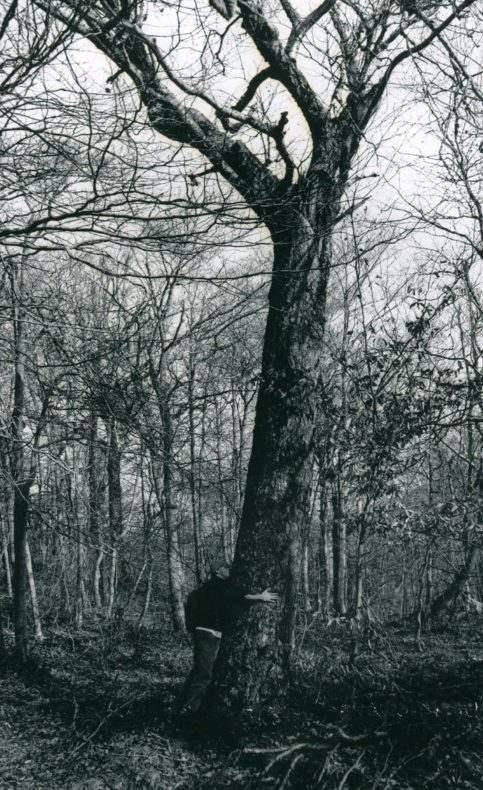 I never meant for this to happen.
I never meant for this to happen.
When I moved to the Pacific Northwest from arid Colorado three years ago, I was one of those people who insisted on horizons.
The town where I was born is a place where the foothills of the Rockies stand like a cliffy coastline overlooking a dry sea of plains. From their height, you can watch the change of light roll through the day like surf, can see storms so far away that lightning comes without sound—a flicker on the dark edge of awareness.
Even now, if you asked me what landscape makes me feel so big and free that I might crack right in half, I would say alpine tundra—the naked, velvet crowns of our sky islands, with their pikas and marmots and ptarmigan, with their cushion plants smaller than mixing bowls but older than I’ll ever be.
When I first moved to the Pacific Northwest, I worried that all this lush and green would make me soft. My friend Ben told me that the first thing I’d notice was how nice everyone’s skin is, compared to the weathered hide that passes for such on we Coloradans. Western Oregon, after all, is a place insulated from the UV glare of the sun by a few thousand extra feet of atmosphere, by dozens of extra days of cloudcover, by air so thick with moisture that it’s practically water. Indeed, as soon as I arrived, I spent a lot less money on lotion. My blood pressure mysteriously dropped 20 points and stayed there.
When I wandered nearby hiking trails in the rolling Coast Range or the foothills of Mount Hood, I had to crane my neck and peer straight up if I wanted to see the sky, broken into scattered shards of blue by swaying conifers. The variety jumbled in all that sameness of electric-bright leaves and needles and moss disoriented my senses. Mushroom hunting in the deep woods, I’d mistake one draw for another, and stroll down a loamy slope onto the wrong forest road, then have to retrace my steps through the vine maple and stabby Oregon grape to find where I’d parked my truck.
I felt that I had sunk to the bottom of the sea, my view closed to a small, murky circle that lost resolution beyond 10 or 20 feet. I understood my leaving home to be a kind of death, a drowning, and I longed for the surface. For the horizon. For the crack-me-open ache of space, spreading away.
And then, somehow, not long ago, my eyes adjusted. In all that wandering the woods searching for the sky, I began to see the trees that blocked it. It was not an accident exactly. I’d been researching and writing stories about forest policies. About the people who lived from forests. About forests themselves. About animals made of salmon who dragged salmon inland to make trees out of salmon.
As I became literate in the landscape I had chosen on an uncertain whim—a strip of profligate vegetative growth that stretches all the way to Alaska—I learned to shape with my mouth some of the more recent names for its living things. I climbed into the low crooks of western redcedars that seemed big around as houses and that, for millennia, have clothed and sheltered and transported the people of these shores and forests. I skittered along slick boardwalks, shlorped through mud and planned 500-mile drives to visit yellowcedar groves. I hugged huge Douglas fir and Sitka spruce, pressing my weathered Colorado cheek and the tinny clock of my heartbeat against the slower, deep-thrum-bass clock of the trees’ life—each hidden interior ring, a physical memory of what it was like in this very spot during one circle of our planet around its sun.
I didn’t know I had changed, though, until I found myself dumbstruck by a simple fact while interviewing a naturalist: Western redcedars are relatively recent arrivals to the upper western margin of North America. And some ancient cedars still living in the islands of southeast Alaska may be the very first of their kind to ever have seeded there. As I recognized their presence as part of a slow, sweeping movement, I felt an expansive sense of time and change that echoed the expansiveness of space native to the mountains and plains where I first laid eyes on the world.
“In Norse mythology,” the landscape writer and glossarist Robert MacFarlane recently wrote in his Twitter feed, Yggdrasil is “the ancient ash tree at the cosmos’s centre, the branches & roots of which connect different realms & times.” Perhaps so with redcedar too, I thought, from the precarious perch of my new and limited knowing.
I never meant for this to happen.
I never meant to be one of those people who would trade redrock bones of desert and mountain crags and the velvet nakedness of tundra for the claustrophobic press of forest. For a place so green and eager to grow that if you sit still too long you’ll be mossed and brambled over, just another soft shapeless lump at the toes of giants.
And maybe I’m still not one of those people.
All I know is that now, when I touch the skin of a cedar, I feel, if not at home, then rooted in my own body–looking for the piece of earth where the restless center of me stills at last, and begins to grow.
Photo and video by the author.
Beautiful.
I grew up in TX and my wife in coastal WA. When we were looking for a place to live & raise our family, I wanted big sky and she wanted ocean. We ended up in San Diego. But I find that what I really want isn’t big sky, it is mountains, trees, and rivers. Someday…